The current DeSci project focuses mainly on the pharmaceutical field, which is one of the low-hanging fruits of improving human health, the most important resource.
Original text:Decentralised.co
Compiled by: Yuliya, PANews
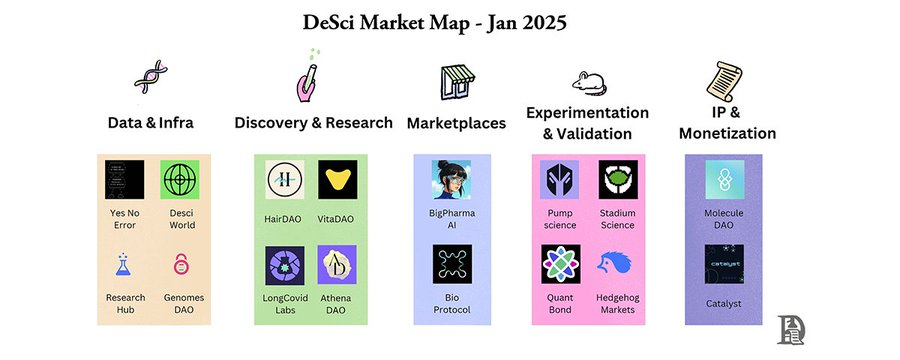
Science has always been the biggest catalyst for human progress. However, when the word science is mentioned today, people tend to be skeptical. When headlines claim that science shows…& quot; When it comes to, it is more likely to arouse ridicule rather than real interest. This growing sense of disillusionment is not without reason. Science has increasingly become a marketing term, diluted by corporate interests, deviating from its fundamental purpose of promoting the development of human knowledge and well-being.
Decentralized Science (DeSci) is a new paradigm that promises to rebuild scientific research on a more solid foundation. Currently, the DeSci project focuses mainly on the pharmaceutical sector, which is one of the low-hanging fruits of improving the health of mankind’s most important resource.
The funding crisis for scientific innovation
The traditional science funding system is in ruins. Academic researchers spend up to 40% of their time writing funding applications, with a success rate of less than 20%. As federal funding declined, private funding increased, but it was mainly concentrated in the hands of large companies.
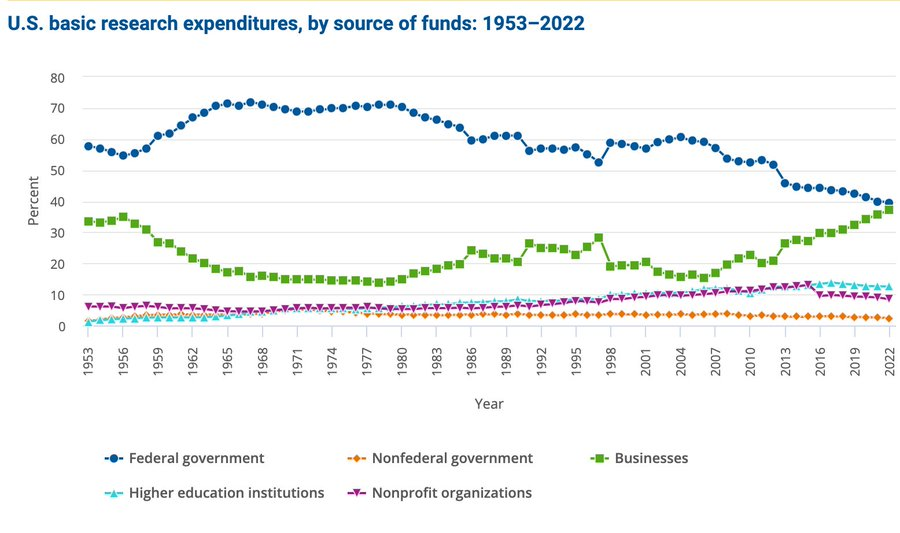
The pharmaceutical industry has evolved into a high-risk game that is not conducive to innovation.Consider the reality that only 1 in 10,000 compounds discovered is successfully marketed. This process is extremely cruel. Only 10% of drugs entering clinical trials are approved by the FDA, and the entire process takes up to 15 years, with the cost of each successful drug exceeding $2.6 billion.
In the 1990s, the centralization of the pharmaceutical industry seemed to be a boon, bringing efficiency, streamlining supply chains, and allowing drug discovery to expand rapidly. But this sophisticated machine, which originally served as an engine of innovation, has evolved into a bottleneck, as the same players hinder progress in order to maintain a monopoly position, causing costs to soar.
Under the current model, a biotechnology startup would spend years seeking NIH funding for early discovery and then raise $15 million in Series A funding to enter preclinical trials. If successful, it would license intellectual property to large pharmaceutical companies, which have invested more than $1 billion in clinical trials and commercialization.
This is where the incentive mechanism is distorted. Instead of focusing on groundbreaking new therapies, big pharmaceutical companies have mastered a more profitable game: patent manipulation. The strategy is simple: when a lucrative drug patent is about to expire, apply for dozens of sub-patents for minor modifications-new ways of administration, slightly changed formulations, or even just new uses for the same drug.
Take AbbVie’s anti-inflammatory drug Humira as an example. For many years, Humira has been one of the world’s best-selling drugs, with annual revenue exceeding US$20 billion. Its original patent expired in 2016, but AbbWay filed more than 100 additional patents to stop generic competition. This legal exercise delays the entry of affordable alternatives to the market, costing patients and medical systems billions of dollars.
in recentTarun ChitraandbenjelsIn the DeSci debate, the issue of stagnation in pharmaceutical innovation was raised and Eroom’s Law (the opposite of Moore’s Law) was cited.
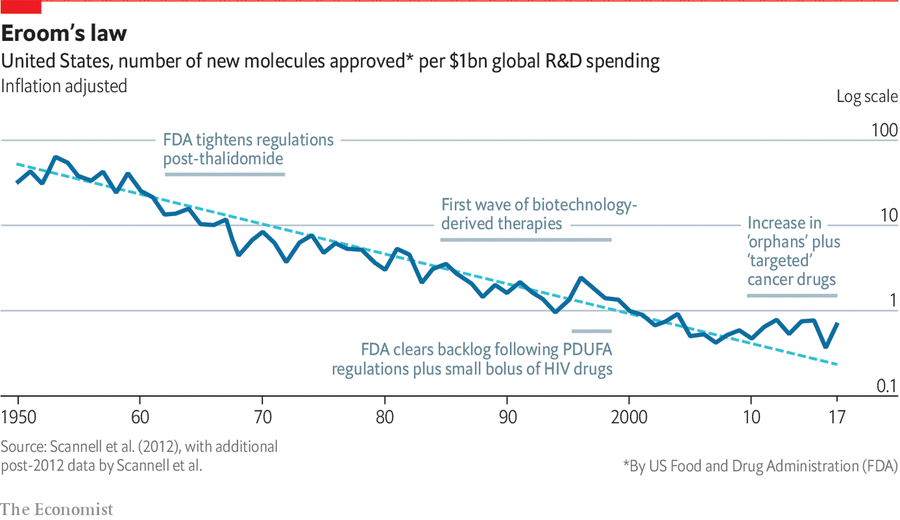
These practices reflect a larger problem:Innovation is captured by profit motives.Pharmaceutical companies are investing resources into fine-tuning existing drugs, making minor chemical modifications or finding new delivery mechanisms, not because this would bring significant health benefits, but because new patents can be obtained and profitable periods can be extended.
Science on better orbit
At the same time, the talented and creative global research community remains excluded from the process. Young researchers are limited by limited funding, red tape and a culture that values publication or extinction of sensational research rather than meaningful research. The result is a serious lack of funding for rare diseases, neglected tropical diseases and early exploratory research.
DeSci is essentially a coordination mechanism.It brings together human capital biologists, chemists, and researchers around the world to enable them to synthesize, test, and iterate without relying on traditional institutions. The funding model has also been reimagined. Decentralized autonomous organizations (DAOs) and tokenized incentives replace government funding or corporate sponsorship, making capital acquisition more democratic.
The traditional pharmaceutical supply chain is a rigid and isolated process led by a few gatekeepers. It usually follows a linear path: centralized data generation, discovery in closed laboratories, high-cost testing, exclusive manufacturing, and restricted distribution. Every aspect is optimized for profitability rather than accessibility or collaboration.
In contrast, DeSci introduced a chain of open collaboration, rethinking each stage, making participation more democratic and accelerating innovation. It is mainly reflected in the following aspects:
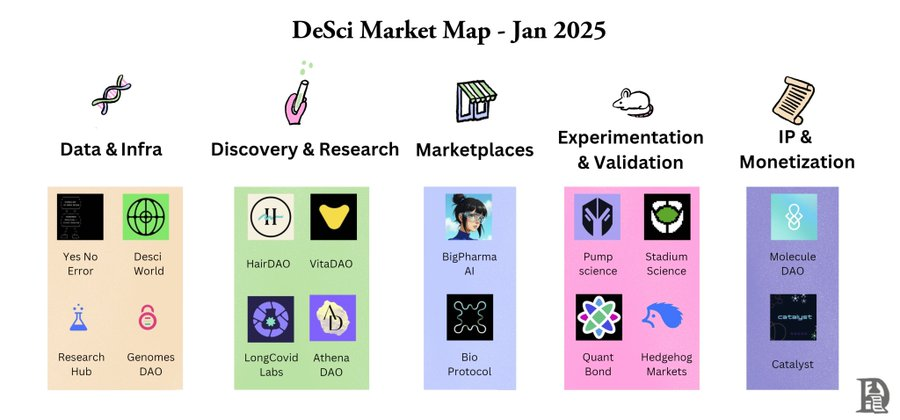
1. data and infrastructure
Traditional model:Data is proprietary, decentralized, and often inaccessible. Research institutions and pharmaceutical companies hoard data sets to maintain a competitive advantage.
DeSci model:The platform gathers and democratizes access to scientific data to create a foundation for transparent collaboration.
Example:yesnoerrorUse AI to check for mathematical errors in published papers to improve the repeatability and credibility of research.
2. discovery and research
Traditional model:Discoveries occur in closed academic or corporate laboratories, subject to funding priorities and intellectual property issues.
DeSci model:The DAO directly funds early research, allowing scientists to explore breakthrough ideas without institutional red tape.
Example:VitaDAOMillions of dollars have been raised to fund longevity research and support previously difficult to obtain funding for cell aging and drug discovery projects.HairDAOIt is a collective of researchers and patients that document experiences with different compounds in treating hair loss.
3. market
Traditional model:Controlled by intermediaries. Researchers rely on traditional publishers, conferences and the Internet to share discoveries and access resources.
DeSci model:Decentralized markets connect researchers with funders and tools on a global scale.
Example:Bio ProtocolProvides researchers with a platform to create BioDAOs dedicated to researching new compounds, providing ongoing funding for newly generated biotechnology assets, and providing a liquid market for tokenized IP. Compared with the AI agent domain, Bio can be regarded as the Virtuals of the DeSci world.
Big PharmaiAs the counterpart of ai16z, it launched an investment in DeSci tokens on Daos.fun. Their AUM has exceeded $1 million and plans to launch their own Bio proxy framework.
4. Experiments and verification
Traditional model:Preclinical and clinical trials are costly and are often limited to large pharmaceutical companies. Transparency is minimized and failures are often hidden.
DeSci model:Platform decentralization experiments, achieving global participation and financial support through tokens.
Example:Pump ScienceUsing binding curves to crowdfund longevity experiments, advancing compounds from worm testing to fruit fly testing to rat testing, and ultimately commercialization.
Medical researchers can findPump ScienceSubmit drug research proposals on the Internet, which helps test these drugs on worms and transmits experimental results to the front end of the platform in real time. Users can speculate on tokens representing these drugs. Two popular tokens, Rif(rifampicin) and URO(uloridine A), are being tested on worms, and if found to extend life, these compounds will enter the commercial stage and holders will share the profits.
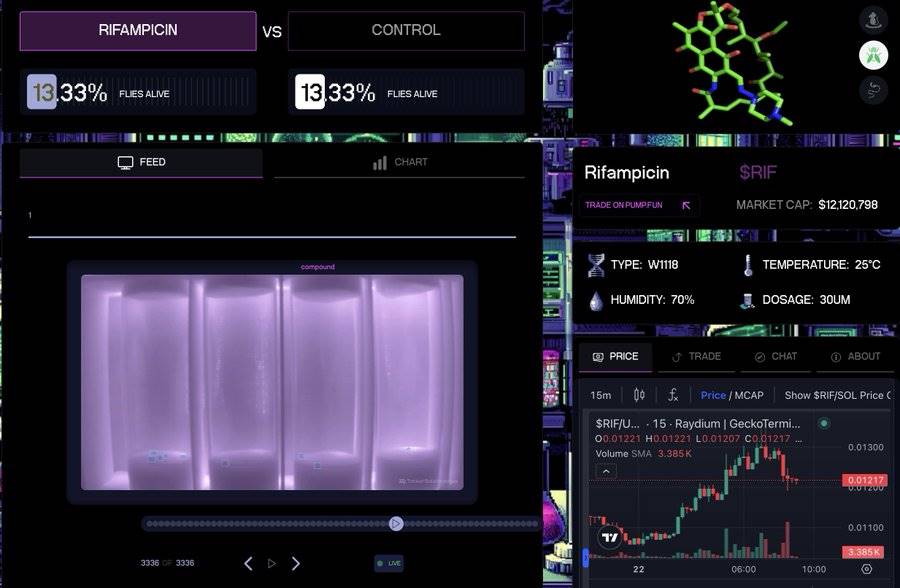
The results of these trials are recorded and broadcast live on Pump.science
5. IP and monetization
Traditional model:Intellectual property rights are locked in patent monopolies, creating obstacles to innovation and inflating drug prices. Patenting new compounds is expensive and painful.
DeSci model:The protocol tokenizes IP, allowing researchers to transparently share and monetize discoveries.
- Example:The IP framework of the company enables researchers to fund projects by splitting IP rights into NFTs and tokens, coordinating incentives between scientists and funders. However, the model is still in its early stages. Only a few researchers have experimented with IP tokenization, and when IP is commercialized, it is still difficult to estimate how profits will flow to holders. In addition, to ensure that IP is adequately protected, researchers may still need to register with traditional government agencies.
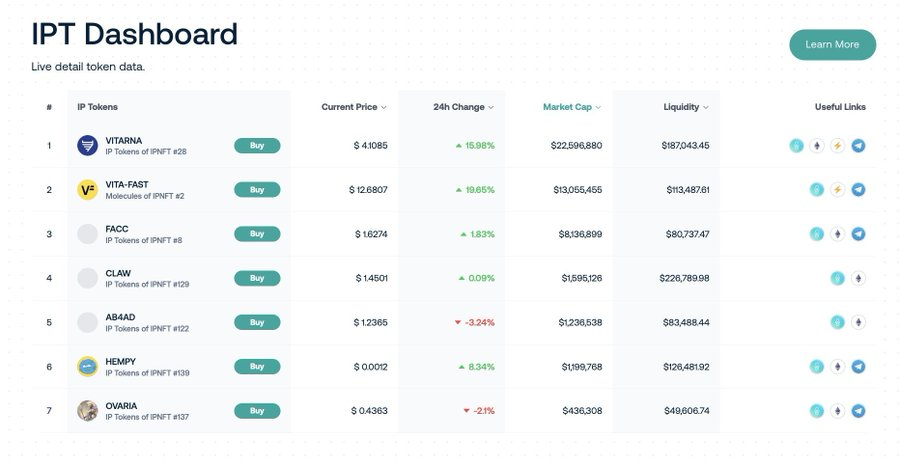
BioDAO passedFramework already holds more than US$33 million in tokenized IPTs
Accountability challenges
DAOs face difficulties in coordinating complex tasks and maintaining accountability Few DAOs have demonstrated sustainable success in managing long-term projects. DeSci faces even greater challenges: It requires researchers to coordinate complex issues, meet research deadlines, and maintain scientific rigour without traditional institutional oversight.
Despite its shortcomings, traditional science has established peer review and quality control mechanisms. DeSci must either improve these systems or develop a completely new accountability framework. This challenge is particularly serious considering the high risks involved in medical research. A failed NFT project can lose money, but a poorly executed medical trial can be life-threatening.
Critics argue that DeSci is just speculation and a trading game.This statement is not completely wrong. History shows that new technologies often experience periods of struggle before achieving breakthrough success and catching the public’s imagination. Just like AI agentsaixbtJust as projects gain mainstream attention, DeSci may need a decisive moment to change perceptions.
The future may not go exactly the way DeSci supporters envision it. Perhaps not to completely replace traditional institutions, but to create parallel systems that drive innovation through competition. Or, perhaps it is to find specific niches where traditional models have failed in areas such as rare disease research.
Imagine a world where outstanding minds are not limited by boundaries or budgets, dedicated to solving mankind’s greatest medical challenges. Breakthroughs in China laboratories can be verified instantly in Singapore and scaled up in Sao Paulo.
The pioneers are building this future step by step. toBryan JohnsonFor example, the independent biohacker is experimenting with off-label drugs and unconventional therapies. While his approach may worry traditionalists, he embodies the spirit of DeSci:Experiments take precedence over checks.
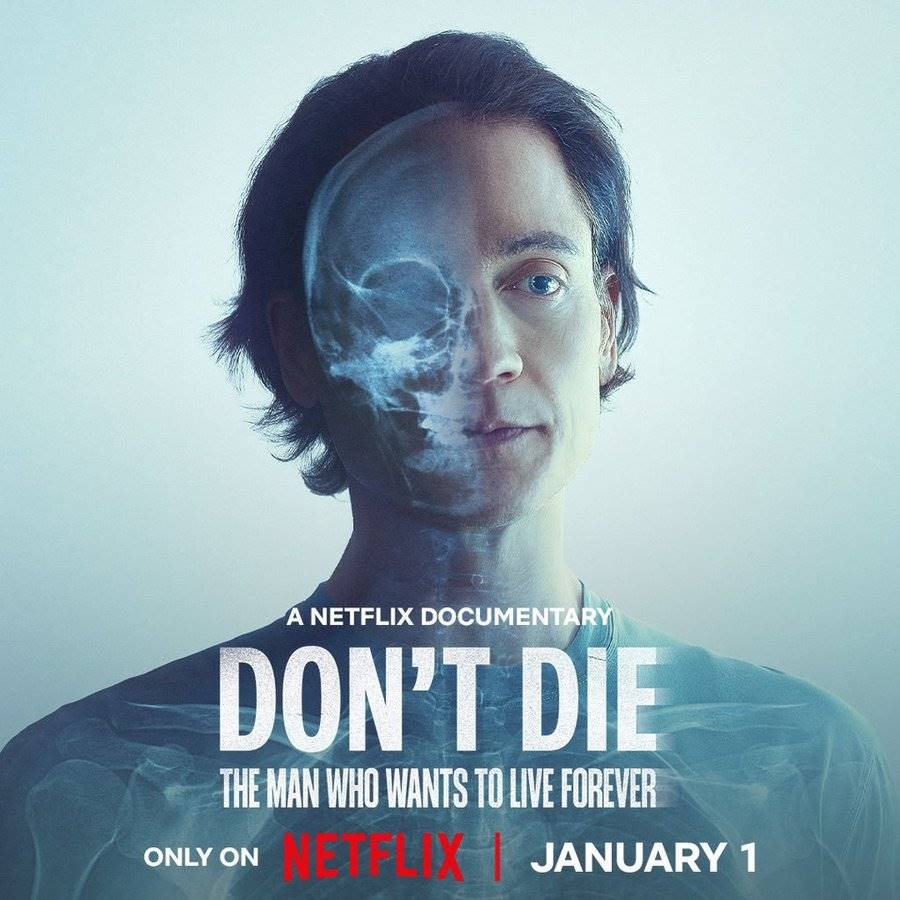
Welcome to join the official social community of Shenchao TechFlow
Telegram subscription group: www.gushiio.com/TechFlowDaily
Official Twitter account: www.gushiio.com/TechFlowPost
Twitter英文账号:https://www.gushiio.com/DeFlow_Intern



